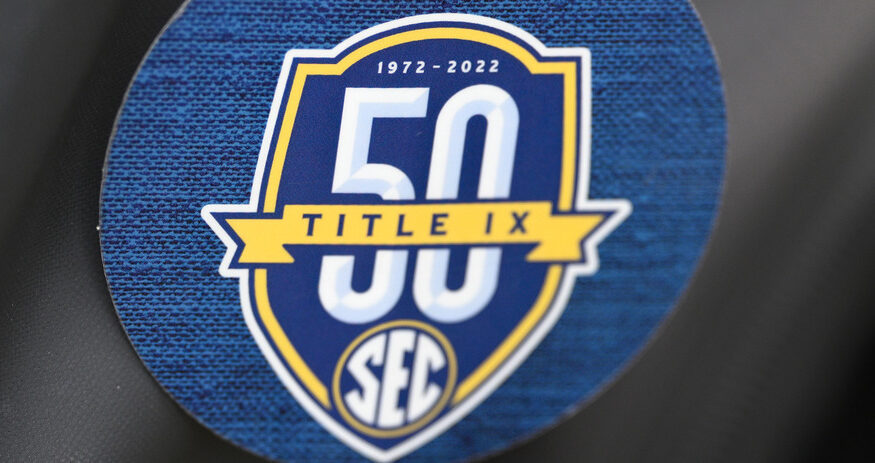Lawyers burn midnight oil studying Title IX revisions
By: Bridgetower Media Newswires//May 21, 2024//
Lawyers burn midnight oil studying Title IX revisions
By: Bridgetower Media Newswires//May 21, 2024//
Attorneys representing colleges and universities face the prospect of shelving summer vacation plans to ensure that their clients are in compliance with the reams of Title IX rule amendments recently released by the U.S. Department of Education.
The new regulations feature an explicit recognition that sex discrimination as defined under Title IX includes discrimination based on gender identity and sexual orientation, as well as revised grievance procedures for the “prompt and equitable” resolution of sexual harassment and sex discrimination complaints.
“These final regulations clarify Title IX’s requirement that schools promptly and effectively address all forms of sex discrimination,” Catherine E. Lhamon, the DOE’s assistant secretary for civil rights, said in announcing the rule changes.
With the authors’ comments, the “unofficial” final version of the rules total 1,577 pages. The official version published in the Federal Register fills 423 pages of triple-columned fine print. That’s a lot of rulemaking for school administrators and their lawyers to process and implement before the new standards go into effect on Aug. 1.
The regs represent a “60 to 70 percent” change from what was called for under the Trump-era regulation, according to Worcester, Massachusetts, attorney Amy Fabiano, who advises colleges and universities on Title IX compliance and employment matters.
“There’s a lot that colleges and universities have to do this summer to come into compliance,” Fabiano said, noting that schools already have a full plate dealing with campus unrest caused by the war in Gaza. “And we’re going to learn a lot over the first year of implementation in terms of the choices and flexibilities that schools decide to lean into under the new regulations.”
“While that [Aug. 1] date gives us sufficient time to breathe, digest and implement, it can creep up quickly,” noted Providence, Rhode Island, attorney Steven M. Richard, who maintains a practice representing colleges and universities both in Rhode Island and elsewhere in the nation.
Boston litigator Regina M. Federico called the new rules a “mixed bag,” with the Department of Education keeping some of the practices implemented in the 2020 regulations while making significant changes in other aspects of the rules.
“One of the biggest changes is that a school does not necessarily have to give a respondent any real substantive details about the alleged conduct before they go into a meeting,” said Federico, who represents both students and faculty accused of misconduct as part of her higher ed practice. “If someone goes in for an interview, it’s very possible they have no real understanding of the conduct alleged other than a three-word [description].”
Sex discrimination redefined
The rules roll back regulations issued by former Education Secretary Betsy DeVos in 2020 that sought to increase protections for the rights of students accused of sexual misconduct.
Richard lamented the regulatory back and forth.
“Unfortunately, since 2011, Title IX has at times become a revolving set of standards based upon whether a Republican sits in the White House or a Democrat,” Richard said. “We went from the Obama guidance documents to the Trump rescission of those documents and the implementation of the 2020 regs in the middle of a pandemic. Now, four years later, we’re dealing with change again.”
Enacted in 1972, Title IX provides that “[n]o person in the United States shall, on the basis of sex, be excluded from participation in, be denied the benefits of, or be subjected to discrimination under any education program or activity receiving Federal financial assistance.”
The new rules amend Title 34, Part 106 of the Code of Federal Regulations. Most notably, 34 C.F.R. §106.10 makes clear that the protections of Title IX extend to LGBTQ+ students by defining discrimination on the basis of sex as including “discrimination on the basis of sex stereotypes, sex characteristics, pregnancy or related conditions, sexual orientation, and gender identity.”
“Title IX has always applied to all discrimination on the basis of sex,” Fabiano said. “Now, the regulations themselves are being very clear about what that means.”
Federico sees the rule changes as a positive step.
“[Section 106.10] is certainly a big change,” she said. “That is going to be helpful for many students who are seeking accommodations, as well. For example, the pregnancy protections will be very helpful for students who need additional time to continue with their programs.”
Flexibility at expense of individual rights?
Section 106.45 of the new regs sets forth standards for grievance procedures that deliver “prompt and equitable” resolution of sex-discrimination complaints. Unlike the Trump-era rule, the new rule allows the decision-maker designated by the school also to act as Title IX coordinator and investigator in the case.
“It is important that the investigator and adjudicator remain separate,” Federico said. “Some schools may still opt to do that, but it will be interesting to see how that develops.”
The rule instructs that a school “must provide a process that enables the decision-maker to question parties and witnesses to adequately assess a party’s or witness’s credibility to the extent credibility is both in dispute and relevant to evaluating one or more allegations of sex discrimination.”
Richard said the rule makes clear that there will be prescribed processes for sex discrimination.
“Schools have had procedures to deal with all types of discrimination, but now the rules have centralized — particularly under Rule 45 — expectations as to all types of sex discrimination, which is a broadly defined term,” he said.
Section 106.46 provides grievance procedures for the prompt and equitable resolution of complaints of sex-based harassment involving student complainants or student respondents at post-secondary institutions. Subsection (g) of the rule gives schools the option of whether to conduct live hearings.
The rule states that if “a postsecondary institution chooses to conduct a live hearing, it may conduct the live hearing with the parties physically present in the same geographic location. At the postsecondary institution’s discretion the institution may, or upon the request of either party it must, conduct the live hearing with the parties physically present in separate locations, with technology enabling the decision-maker and parties to simultaneously see and hear the party or the witness while that person is speaking.”
In lieu of a live hearing, the rule provides an alternative method by which each party may propose questions to be asked of any party or witness and have those questions asked by the decision-maker.
Richard said the rule change provides schools with flexibility they do not currently have under the Trump rule in terms of how they can investigate and determine complaints.
“That’s a significant change in that schools are evaluating whether to keep existing processes in place that include cross-examination,” he said.
But Federico said she views live hearings as essential for a fair proceeding.
“Without that live opportunity to put questions to witnesses and others involved in the process directly, you will not be able to capture exact reactions,” Federico said. “And from a purely logistical standpoint, it’s just much easier to do it in a live manner.”
Counseling clients on how to maintain balance and fairness throughout the grievance process is always a concern, Richard said.
Richard said he tries to explain to clients the need to find the right balance so that both sides of the concerns can be heard.
That includes the complainants, “as far as their ability to report, their ability to feel they can participate in a process that admittedly can be very difficult,” he said. “But on the other hand, I fully recognize as a lawyer defending schools never to lose sight of the life-altering consequences that a disciplinary determination could have on a student.”
Legal challenges
Issuance of the rules has prompted legal challenges by red state attorneys general and conservative advocacy groups.
According to Richard, those challenges cannot allow schools to be distracted from compliance planning and implementation.
“We have to proceed on the assumption that the regulations will take effect notwithstanding those judicial challenges, and that compliance will be expected as of August 1 going forward,” Richard said.
One of the first legal challenges was filed on April 29 in the U.S. District Court for the Northern District of Alabama. In Alabama v. Cardona, the states of Alabama, Florida, Georgia and South Carolina, along with three advocacy groups, allege that the Biden administration’s repeal and replacement of the Trump administration’s Title IX rule violates the Administrative Procedure Act.
In addition, the suit alleges that the rule’s redefinition of sex discrimination is unlawful.
“The challenged rule redefines ‘sex’ to include ‘gender identity’ and ‘sexual orientation,’ declares unlawful longstanding policies requiring individuals to use bathrooms matching their biological sex, and upends the foundation of women’s sports. All illegal,” the complaint states.
Also on April 29, Texas sued in federal court to block the rule, characterizing the Department of Education’s action as an attempt “to effect radical social change in our Nation’s schools by purporting to ‘interpret’ Title IX of the Education Amendments Act of 1972 to prohibit discrimination based on sexual orientation and gender identity. … This Final Rule tells States and other regulated parties that they must ignore biological sex or face enforcement actions and the loss of federal education funding.”
Richard declined to venture a guess as to whether the new regulations will ultimately withstand legal challenges. Instead, he is focused on preparing schools for compliance.
“I tell my clients to first take a deep breath and then to conduct an internal audit of where you stand and how your processes are working and may need to be changed,” he said. “Most importantly, start to caucus your key constituent stakeholders who are involved in your Title IX implementation to make sure they understand what may need to be changed and their respective roles in the change.”
As a litigator, Richard is also mindful of how the structure of clients’ grievance processes will withstand scrutiny when tested in court.
“When I implement new policies to comply with the regulations, in the back of my mind I also do not lose sight of what I may have to say before a judge, standing up to defend a process when it’s challenged by a complainant or a respondent,” he said. “Judges may have different expectations or standards, or Supreme Court precedents may not be totally aligned with what the current department or administration may require.”
Richard does foresee that schools will have to investigate and hear a greater number of complaints under the new rule.
“The regulations now encompass more types of conduct within the Title IX regulatory requirements and, jurisdictionally, more issues will have to be addressed, resolved and implemented through Title IX processes than perhaps under the current 2020 rule,” he said.
Legal News
- Wisconsin Supreme Court to consider whether 175-year-old law bans abortion
- Wisconsin man facing bestiality and felony bail jumping charges
- Waukesha County woman indicted in National Health Care Fraud Law Enforcement Action
- Man sentenced to 15 months for fraud involving luxury vehicles
- Wisconsin Department of Justice Fire Marshal investigating fire that killed six
- Ozaukee County first responders save family of three, father and son on Milwaukee River
- Supreme Court sends Trump immunity case back to lower court, dimming chance of trial before election
- Brewers have American Family Field escalators inspected after malfunction results in 11 injuries
- US wants Boeing to plead guilty to fraud over fatal crashes, lawyers say
- GOP lawmakers in Wisconsin appeal ruling allowing disabled people to obtain ballots electronically
- 11 people injured when escalator malfunctions at Milwaukee ballpark
- Judge receives ethics fine after endorsing candidate
Case Digests
- Termination of Parental Rights
- First Amendment Rights
- Termination of Parental Rights
- Late Filing
- Real Estate-Attorney Fees
- Ineffective Assistance of Counsel
- Variance-Interpretation of Zoning Ordinances
- Sentencing
- Fourteenth Amendment’s Due Process Clause-Jury Instructions
- Unlawful Collection Practices-Evidence
- Sentencing-Vindictiveness
- Prisoner Grievances-Exhaustion of Administrative Remedies












